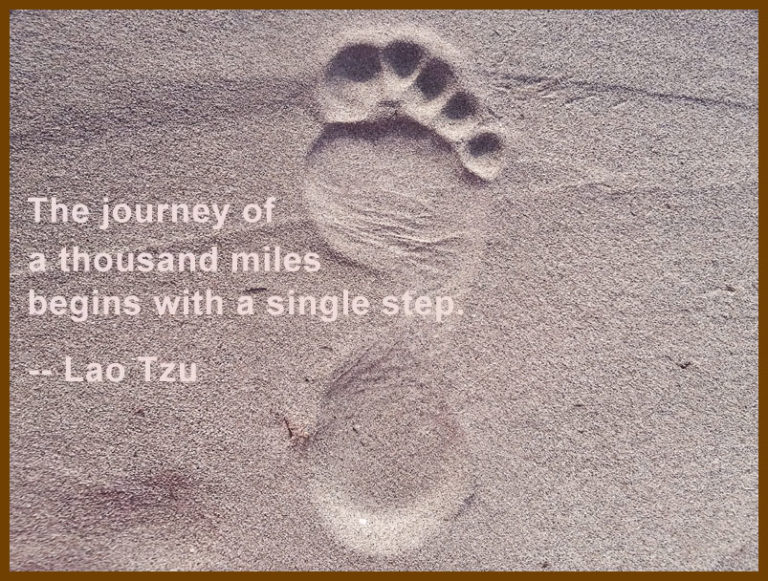The Power of Positive IDA
September 8, 2024

By Joel Morgan
Welcome to Time Diamonds! In this week’s “new day’s resolution” conversation, we take a step closer to the lives we want to lead by tapping into The Power of Positive IDA (Immediate Decisive Action)!
Before we discuss the power of positive IDA, let’s take a look at negative IDA. Whereas positive IDA means “Immediate Decisive Action”, negative IDA means “I wish IDA done it”!

Thank you, yes, I did create the illustration; no applause necessary. 😛
Not very attractive, right? And the results of falling prey to negative IDA aren’t very attractive either.
The Impact of Negative IDA
Negative IDA takes two possible forms in our lives – 1) fear of taking a step that want to take, or 2) habitually postponing important actions, a.k.a., procrastinating!
Australian palliative care nurse Bronnie Ware published a book in 2012 called “The Top Five Regrets of the Dying”. In her book, Ware summarizes the dying epiphanies of her many patients over the final weeks of their lives. As you can see from her list below, some of these regrets arise from the negative IDA of fear, while others are the result of procrastination:
- I wish I’d had the courage to live a life true to myself, not the life others expected of me. (fear)
- I wish I hadn’t worked so hard. (fear and procrastination)
- I wish I’d had the courage to express my feelings. (fear)
- I wish I had stayed in touch with my friends. (procrastination)
- I wish that I had let myself be happier. (fear and procrastination)
The Personal Cost of Negative IDA
The negative IDA of fear convinces us that the potential (and usually unknown) consequences of taking a certain action will be worse than the consequences of not taking that action. When it came to living true to themselves, Ware’s patients looked back on their lives with regret at having succumbed to the negative IDA of fear.
The negative IDA of procrastination tells us that we’re somehow better off postponing an action until another time in favor of something that may be more urgent (but is probably simply easier) than the action that we’re postponing. Certainly, none of us would suggest that it’s a good idea to postpone important actions indefinitely (or even permanently), but we still allow negative IDA to convince to do so anyway!
The Financial Cost of Negative IDA
While the negative IDA of fear typically carries a personal happiness cost, the negative IDA of procrastination can also carry a financial cost. According to a 2010 study (admittedly, somewhat dated now) published by Basex, a U.S. knowledge economy research firm, knowledge workers in the U.S. in 2010 wasted approximately 25 percent of their time dealing with information overload in the form of the incessant stream of data that bombards each of us every day.
The Basex study estimated that the distraction of information overload cost the U.S. economy a staggering $997 BILLION in reduced productivity and innovation in 2010. And while the Basex study covered only the U.S., it’s not a stretch to believe that information workers in the rest of the world suffered the same level of distraction as well.
If the high-level national cost of procrastination due to information overload doesn’t give you pause for thought, a much more personal point might. A 2009 study conducted by Gloria Mark, a University of California, Irvine professor in the department of informatics, found that employees typically focus on a task for approximately three minutes before tending to email, social media, or their smartphone. It takes 20 minutes to return to the original task following such a distraction.
Just let that sink in for a moment. Three minutes of work, followed by checking email, text, or IM, followed by a 20-minute lag before we’re able to return focus properly to the action we really needed to take in the first place!
So, how can we eliminate the power of negative IDA in our lives?
Tapping Into the Power of Positive IDA

By the way, for anyone interested in owning one of my stunningly artistic IDA graphics, send me a message through the “Contact” page and I’ll happily send you your very own pair of IDA prints. 😀
Positive IDA stands for “Immediate Decisive Action”. In other words, what action can you take right now, this moment, that will represent a significant step toward the life that you truly want to lead?
Let’s take Bronnie Ware’s list of negative IDA’s from the deathbed revelations of her patients and turn those into positive IDA’s. That positive IDA list might then look like this –
- What IDA can I take right now to restore self-truth to my life choices instead of making the choices others expect of me? Explore a change to the career I wanted? Sign up for music lessons? A simple but meaningful change of wardrobe?
- What IDA can I take right now to restore better work-life balance? Eliminate an information overload distraction that reduces my work efficiency, forcing me to spend more hours getting my job done? Reduce / eliminate an expense that requires higher income (and, ostensibly, more work hours)? Explore a career change?
- What IDA can I take right now to conquer my fear of expressing myself? Contact someone with whom I’ve had a falling out to express my feelings? Or, on the positive side, contact a friend or family member out of the blue to express my appreciation for him or her?
- What IDA can I take right now to restore connection with an old friend? Pick up the phone and call? Try to find him/her in social media? Schedule a meal or other activity together?
- What IDA can I take right now to let myself be happier? Make an intentional choice right now to move on from the pain of an old insult, loss, or other personal injury? Turn off the news? Stop reading user comments in social media?
The Power of Taking One Step
The list above represents possible first steps. And, amazingly, taking a single step toward an important goal or task can often be the one single thing we need to break through the grip of negative IDA and complete that goal or task.
Psychologist Dr. Jeremy Dean, in his blog, Psyblog, describes the power of “the Zeigarnik effect”, named after 20th-century Russian psychologist, Bluma Zeigarnik.
Zeignarnik had observed that we seem to be much more likely to remember tasks if we’ve at least begun them, regardless of where we are in the arc of completion. She conducted experiments in the 1920s in which participants were asked to perform small tasks in her lab, such as assembling puzzles or stringing beads. When asked later to describe their activities, participants were much more likely to remember tasks left unfinished than those that had already been completed.
The ultimate importance to us of these experiments? Taking one step, any step, is very likely to lead to another step. Putting it another way, the distance from step 1 to step 2 is shorter than the distance from step 0 to step 1. All we have to do is take step 1!
The “Dash” Method
So, what are some possible strategies for taking that first step?
In his 43 Folders productivity blog, Merlin Mann describes a procrastination-beating tactic called a “dash”, which he describes as “a short burst of focused activity during which you force yourself to do nothing but work on the procrastinated item for a very short period of time—perhaps as little as just one minute.”
In other words, you’re setting yourself a goal that is ridiculously easy to accomplish, so you don’t need to make any sort of grand weighty commitment to “get it knocked out”. You just do it without even necessarily having to “block off time” for it. But that “dash” still provides you with the psychological boost of knowing that you’ve at least taken that critical first step. You’ve started on the task.
Coupling Mann’s approach with the Zeigarnik effect suggests that after we’ve taken that ridiculously easy first “dash” step, we are then MUCH more likely to take the next step after that. And then the next. And then the next. And suddenly, we find that the task is complete! The power of positive IDA!
Ancient Chinese philosopher Lao Tzu also recognized the power of positive IDA, as he expressed in this teaching: “The journey of a thousand miles begins with a single step”.

What’s Your IDA For Today?
In conclusion, I challenge you to choose your IDA for today and do it! Maybe it’s taking five minutes to explore that career change you want to make. Maybe it’s one minute of stretching exercises right next to your desk (the first step toward better fitness!). Maybe it’s 10 minutes of trying to find the contact information for that dear friend that you never wanted to lose touch with.
Tap into the power of positive IDA. Choose your Immediate Decisive Action and do it today!